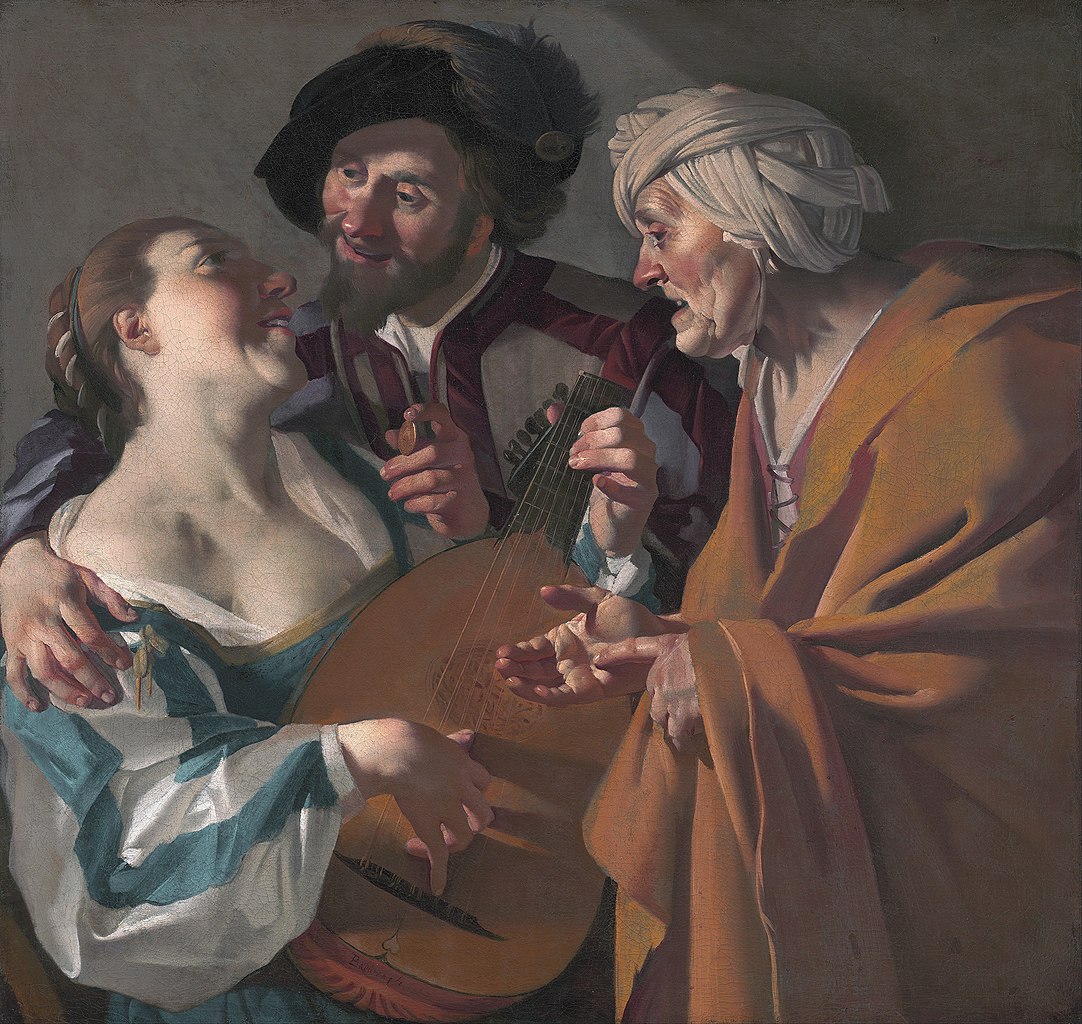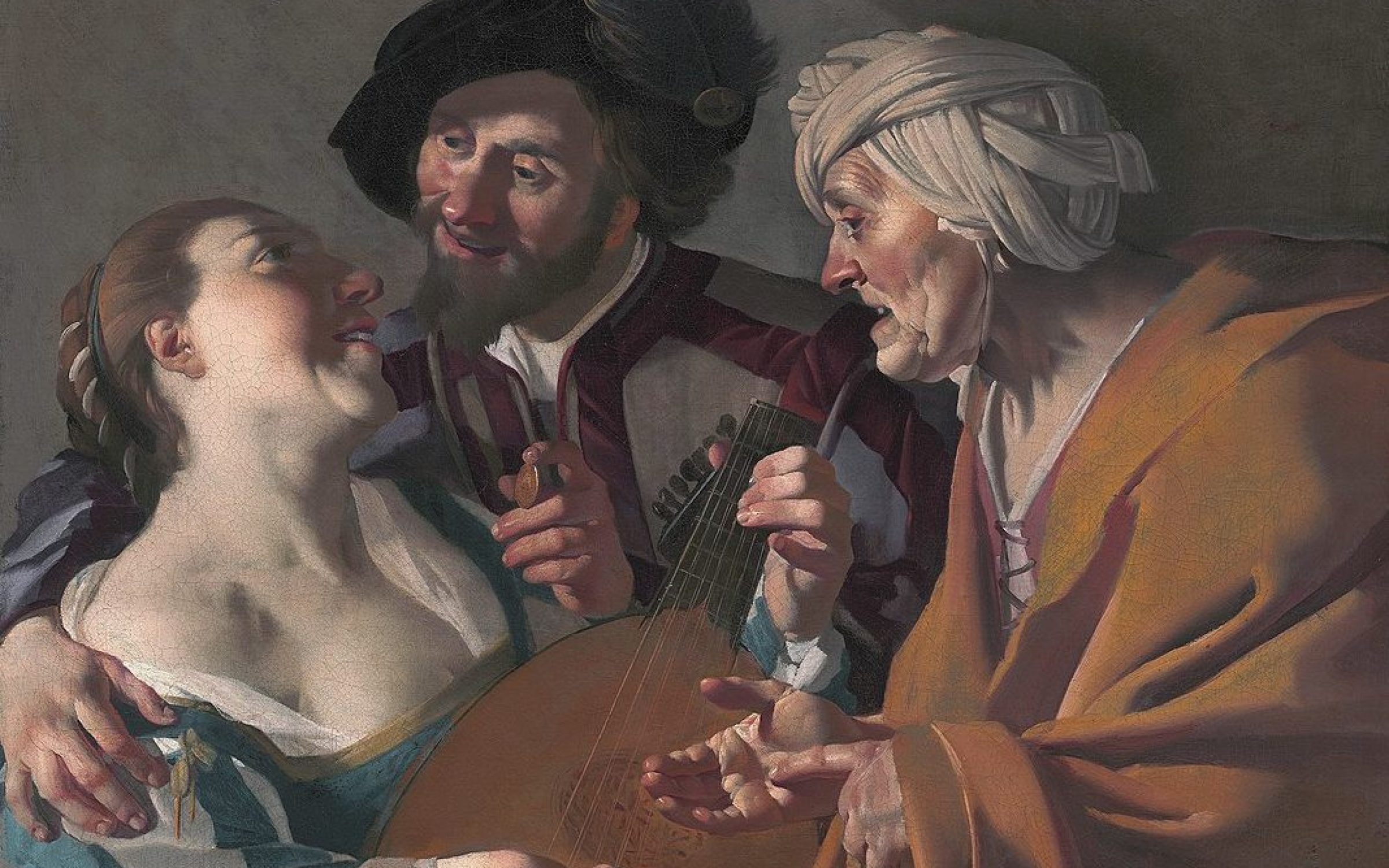Here are three people we almost feel we know personally. The artist Dirck van Baburen gives them such energy, such conviction as characters engaged in a dynamic relationship, an exchange that is progressing as we watch: we are irresistibly involved.
The sharp light that brings out details of their clothing, their expressions and gestures also illuminates their psychology so that we know exactly what is going on between them. Or do we?
Like several of his fellow painters in Utrecht, one of the leading cities of the new Dutch Republic, van Baburen lived for some years in Italy, absorbing the lessons and ideas of the masters in Parma and Rome, chief among them Caravaggio, who brought a new realism to the presentation of individual people, made more vividly present by dramatic chiaroscuro, or the play of light and shade.
These ideas spread to the Protestant Netherlands at the moment when that vigorous new state was establishing itself, liberated after a struggle from the constraints of Catholic Spain. Artists were becoming virtuoso analysts of human nature, well trained in close observation backed up by a profound understanding of anatomy, expression and the psychology of ordinary people in everyday situations.
We see the fruits of this new approach to painting here. And yet, vividly immediate as this group is, we know that van Baburen is really repeating a well-worn moralising topic, one that has taken on fresh relevance in the prosperous, liberated middle-class society of seventeenth-century Utrecht.
What’s delightful and intriguing is his ability to put new and original clothes on familiar, even “stock” characters: the lecherous young man rendered gullible by his own lustful thoughts, the scheming old woman and the flirtatious girl embody ideas well-grounded in traditional parables of human nature.

The artist builds his little drama on the contrast between the raddled features of the wily old crone who is bringing the couple together and the brightly smiling — but surely equally scheming — younger one, with her engaging smile and well-lit bosom, the hands busily keeping up the musical enticement that draws the only-too-eager victim of their ploy. He is intensely concentrated on the pursuit, which he is reinforcing with an offer of money to the girl herself, not to the crone, who we see is determined to get her slice of the bargain.
The young man’s lustful expression is wonderfully captured. The intensity of his narrowly focussed gaze sets the whole design of the picture in motion, though it’s interesting that the girl’s reciprocal look is partially in shadow, so that we can’t help wondering if that bright smile isn’t merely part of the charade the two women are acting out for him. The light bounces across the canvas, off her cheek, her shoulder and then her wrist, which introduces the play of fingers that takes up the centre of the composition.
Dirck van Baburen has brought us very close to these people so that we are part of their discussion too. Shall we warn the young man of the danger he’s flirting with? Or will we elbow the interfering old witch aside, and join in listening to the seductive twanging of the lute? There’s a dark shadow on the wall behind the old woman’s turbaned head: should we read that as an omen, a warning?
The conventional moralising that usually accompanies a subject like this is kept very much in the background so that we can simply read the picture as a source of pleasure — not least, pleasure in the artist’s virtuoso performance as a recorder of the human comedy.
Andrew Wilton was the first Curator of the Clore Gallery for the Turner Collection at Tate Britain and is the author of many works on the artist.




